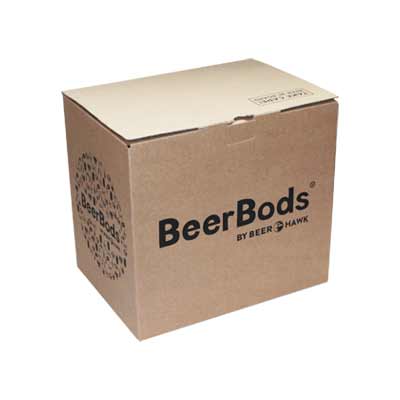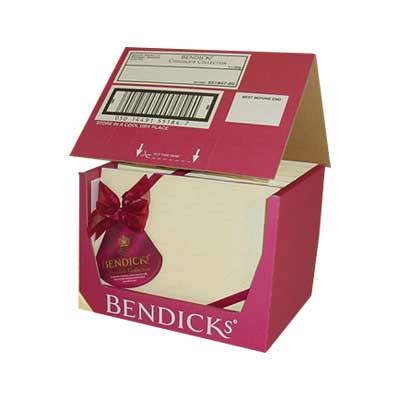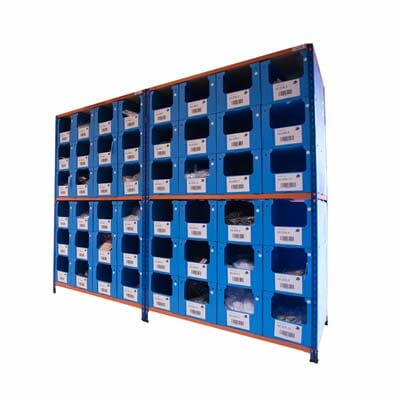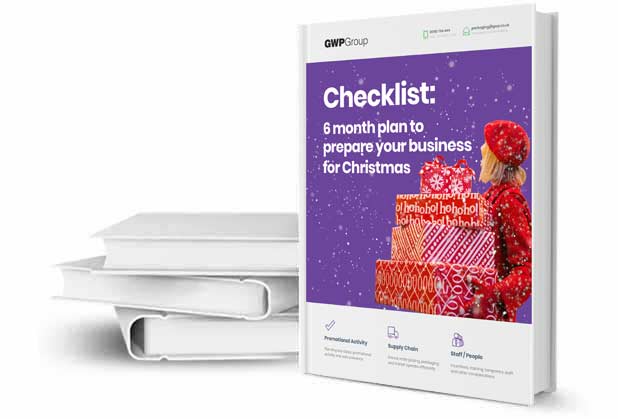UK Christmas statistics
Over 100 facts about Christmas packaging and waste
If you’re interested in consumer behaviour or concerned about the environmental impact of the festive season, then these Christmas packaging facts and waste statistics are for you.
Barely believable Christmas packaging facts include that approximately one billion Christmas cards are thrown away every year. Based on the idea that one tree could produce 3,000 Christmas cards, we would require the space of 77 football fields to replant the amount we use each year. As much as 114,000 tonnes of plastic packaging is thrown away in the UK alone over the holiday season, that’s the equivalent of the weight of 650,000 reindeer. UK Christmas waste statistics suggest a typical household generates over three black bags’ worth of packaging waste at Christmas.
Yet it is easy to forget about packaging during the festive season.
In this article, we’ll present a comprehensive selection of Christmas packaging facts, organised into several topics for 2025. There are several tips on minimising waste and increasing recycling, too.
Important note
This article is a round-up of statistics and figures from various sources from across the web. Please note that the figures themselves have not been researched or verified by GWP Group ourselves. The original sources of the statistics have been included for your reference.

Contents
- Top 10 Christmas packaging facts
- Christmas card and packaging facts
- Wrapping paper waste statistics
- Christmas gift packaging facts
- Christmas waste statistics
- Christmas recycling facts
- Christmas food facts
- Christmas food waste facts
- Christmas drinking statistics
- Weird and wacky Christmas facts
- General packaging facts
- Christmas recycling tips
- Merry Christmas from GWP
Christmas in numbers
The top 10 Christmas packaging waste facts
The top 10 Christmas packaging waste facts for 2025 are:
- UK consumers bin 13,350 tonnes of glass over the festive period.
- Brits eat approximately 175 million mince pies over Christmas, using 175 tonnes of aluminium packaging.
- The UK uses 227,000 miles of wrapping paper each year, which is enough to cover the Shard 4,567 times.
- The card material used at Christmas would stretch between London and Lapland over 100 times.
- The amount of cardboard used to package PlayStation, Nintendo, and Xbox consoles covers an area larger than the city of London.
- Around eight million real Christmas trees are disposed of each year in the UK, resulting in approximately 12,000 tonnes of waste.
- Amazon captured 29% of global online orders in the run-up to Christmas
- UK residents send around 114,000 tonnes of plastic packaging to landfills instead of being recycled.
- UK households throw away over three black bags’ worth of Christmas packaging each year.
- The average person in the UK handles over 50 types of packaging every single day.
Christmas card and packaging facts
How many Christmas cards are sent each year in the UK?
The Royal Mail estimates that it delivers around 150 million cards during the Christmas period. On average, each person in the UK sends around 16 Christmas cards; other sources claim that one billion Christmas cards are sold in the UK each year.
Other Christmas card and card packaging facts include:
- Approximately 30,000 tonnes of Christmas cards are thrown away each year in the UK.
- One tree can produce up to 3,000 Christmas cards, meaning a single tree is enough for only 176 people to send cards.
- If as many as one billion Christmas cards end up in bins, that is the equivalent of 33 million trees.
- Consumers and businesses use around 300,000 tonnes of card packaging and materials during the festive period.
- The amount of card material (cards and packaging) used over the Christmas period could cover Big Ben 260,000 times.
- The amount of card used in the UK at Christmas would stretch between London and Lapland (and back again) 103 times.
- The card packaging used at Christmas is enough to cover the Giant’s Causeway over 1,800 times.
- The amount of card used over Christmas could also wrap the Angel of the North approximately two million times.
- The card packaging used in the UK each year would cover the London Eye almost 50,000 times.

Wrapping paper waste statistics
How much wrapping paper is used at Christmas?
Consumers in the UK use around 227,000 miles of wrapping paper each year, with the average household using four rolls of wrapping paper, and over 83km2 of wrapping paper ending up in the bin.
Other statistics on wrapping paper include:
- Defra (the Department for Environment, Food and Rural Affairs) estimates that the paper used each year is enough to wrap the island of Guernsey.
- The amount of wrapping paper the UK uses has reportedly dropped since 2016, when it was enough to wrap around the world 22 times.
- However, Brits still bin the equivalent of around 108 million rolls of wrapping paper each year.
- The amount of wrapping paper thrown away could reach the moon, the equivalent of 384,400 km.
- A large proportion of wrapping paper can’t be recycled because it contains plastics, such as glitter or laminates.
- Research by Greenpeace found that 1kg of wrapping paper is responsible for more than 3kg of CO2 emissions during its production process (primarily due to the 1.3kg of coal needed to manufacture it.
- Traditional Christmas colours used on gift wrap are greens, reds, and golds, but did you know the human eye can distinguish more shades of green than any other colour?

How many rolls of Sellotape are sold at Christmas?
Estimates indicate that the UK uses around 40 million rolls of Sellotape each Christmas. On average, each household uses a roll and a half of sticky tape each. As a whole, the UK uses a million rolls of tape on Christmas Eve alone.
It is estimated that 1.6 million miles of Sellotape is used in the UK at Christmas time. To put this into perspective, this could wrap around the world 66 times.
Christmas gift packaging (and spending) facts
How much does the UK spend on Christmas gifts?
An average adult was expected to spend an average of £596 on Christmas gifts in 2024, with total spend expected to be £28.6 billion across the UK.
Other facts on UK spending on Christmas gifts include:
- The average child receives between 10 and 15 gifts in the UK (mainly in corrugated packaging).
- Christmas spending on gifts was £27.6 billion in 2023.
- There was a drop in spending during the cost-of-living crisis in 2022; however, Christmas spending has now increased for two consecutive years.
- The majority of buyers buy Christmas gifts for between six and 10 people each year and spend an average of £30 to £50 per person.
- Online shopping has increased significantly, with online purchases accounting for 28% of overall spending throughout December.
How much packaging is generated by Christmas gifts each year?
Estimates suggest that only 1% of overall household packaging is dedicated to toy packaging, and around 80% of toys utilise card and paper packaging, which is fully recyclable.
Similar Christmas packaging facts also include:
- The PlayStation 5 sold 5 million units during the Christmas period in 2024, generating approximately 11,400 tonnes of packaging waste.
- The Nintendo Switch was one of the most popular Christmas gifts of 2024, with sales of 82 million units and 1,359.80 million games.
- At least one of the gifts that you order online will likely use bubble wrap as a protective layer for shipping (inside the outer eCommerce box), but did you know its original purpose was as textured wallpaper?
- People in the UK use 189 million batteries over the Christmas period and throw away seven million batteries during this time.
- In the UK, it is estimated that 25 million toys gifted for Christmas are neglected by the end of January.
- In the lead-up to Christmas, as parents plan to declutter in preparation, it’s expected that nine million toys end up in landfill.

How many unwanted Christmas gifts are given each year?
An estimated three in five Brits received an unwanted Christmas gift in 2024, equating to around 31 million adults, with total spend on unwanted gifts estimated to be £1.27 billion.
Of all purchases made over the Christmas period in the UK, only 1% will still be in use six months after the big day.

Christmas packaging waste statistics
How much waste is produced at Christmas?
The UK typically produces and discards an additional 30% of waste throughout the festive period compared to the rest of the year, with typical UK households discarding over three and a half black bags of festive packaging. More than 100 million bags of waste are sent to landfills each Christmas.
Other shocking Christmas waste statistics include:
- The additional waste from Christmas equates to approximately three million tonnes.
- An estimated 5 million Christmas dinners are thrown away in the UK each year.
- Approximately 500 tonnes of Christmas lights are discarded every year in the UK.
- £42 million worth of unwanted Christmas presents are sent to landfills each year.
- Brits throw away the equivalent of 108 million rolls of wrapping paper each year.
- Approximately 114,000 tonnes of recyclable materials were incorrectly disposed of in the UK during the Christmas period.
- Collectively, people send more than 100 million bags of rubbish to landfills each Christmas.
- Americans throw away 25% more waste from Thanksgiving to New Year’s than any other period.
- Six in ten people say they don’t feel guilty about what they throw away over the festive period.
- One in ten people have rows with their families because of the amount of waste they produce over this period.
- Those most concerned about Christmas waste are Millennials (aged 24 to 35) and Gen Z (aged 18 to 24).

Plastic waste at Christmas
Although the amount of plastic waste over the festive period has fallen slightly over the last decade, from 125,000 to 114,000, this still equates to 3.3 million Emperor Penguins. 72% of UK residents are keen to reduce their plastic waste this Christmas.
Other plastic waste facts to consider this Christmas include:
- The amount of plastic packaging consumers generate each Christmas weighs the same as 447 Statues of Liberty.
- Consumers sent 114,000 tonnes of plastic packaging to landfills instead of being recycled over Christmas.
- 95% of Christmas jumpers are made from synthetic fibres made from polymers (i.e., plastic) – every year, an estimated 336,000 tonnes of clothing is thrown away during the festive period.
- Christmas jumpers shed 730,000 microfibres every time they are washed.
- A survey by Go Ultra Low found that 72% were keen to reduce their plastic waste this Christmas.
- A study found that the Lego Star Wars set had the highest greenhouse gas emissions due to the use of ABS plastic.

How many Christmas trees are wasted each year?
The seven million Christmas trees that are purchased each year in the UK generate around 12,000 tonnes of waste. The weight of discarded Christmas trees is around five times as much as the weight of the London Eye. Around 14% of people also discard their artificial Christmas trees in any given year.
Similar facts on Christmas tree waste include:
- WRAP estimates that around 160,000 tonnes of Christmas trees are still dumped each January.
- The BCTGA estimates that approximately 75% of Christmas trees sold in the UK consist of Nordmann Fir, which takes around 10-12 years to grow to a height of six feet.
- The Carbon Trust calculated that a two-metre-high real Christmas tree has a carbon footprint of 16kg CO2 (if it ends up in landfill).
- The Carbon Trust also found that an equivalent artificial Christmas tree has a carbon footprint of 40kg CO2, and typically can’t be recycled.
- Rotting Christmas trees also produce 100,000 tonnes of methane whilst decomposing (25 times more potent than carbon dioxide as a greenhouse gas).

Christmas recycling facts
General Christmas recycling facts
With the introduction of the Plastic Packaging Tax and the Extended Producer Responsibility (EPR) legislation, tax bills for the disposal of materials such as plastic, cardboard, and foil are increasing.
Overall, it is estimated that household packaging waste accounts for approximately 20% by weight of the contents of your rubbish bin. Just one single tonne of landfill costs £126.15 per tonne.
Other Christmas recycling facts to consider include:
- Around 40% of the world’s plastic waste comes from packaging.
- While we recycle around 44% of our waste in England, places like Wales recycle 57% of their waste, and Northern Ireland recycles 46% of its waste.
- Recycling a single aluminium can save enough energy to power a TV for up to three hours.
- As much as 80% of the things that we throw away could be recycled.
- Artificial Christmas trees require at least 10 years of use to offset their environmental impact compared to real trees.
- Waste generated by retailers can increase by up to 30% during the Christmas period, as seasonal items often go unsold and end up being discarded.
- The additional waste generated during Christmas could fill 50,000 double-decker buses.

Facts on paper recycling in the UK
The average family throws away six trees of paper each year. Yet, recycling all of the paper an average family uses would require 70% less energy than making it from raw materials. Every UK council accepts paper for recycling, while 98% also accept card material for recycling.
Other statistics on paper recycling include:
- For every tonne of paper recycling, you save 17 trees, 18.7 square feet of landfill space, and a vast 4,000 kilowatts of electricity.
- Hallmark, a manufacturer of gift wrap and greeting cards, claims to use 100% recycled content for the cores of its wrapping paper.
- However, experiments with using recycled materials in Hallmark products found the results less popular amongst consumers.
- UK councils reject bins containing glitter altogether, deeming the entire load ‘contaminated’. Glitter can clog up recycling machinery and contaminate the recycled material (which becomes unsellable).

Glass recycling facts
Research shows that 13,350 tonnes of glass are thrown away each year, and recycling that glass alone would be equivalent to taking 1,300 cars off the road.
Other glass recycling facts relating to Christmas include:
- One recycled glass bottle saves enough energy to run a 100W bulb for four hours.
- If the UK recycled all of the glass packaging used at Christmas, it would save approximately 4,200 tonnes of CO2.
- Glass jars are now, on average, 30% lighter than they were in 1980.

Recycling cans and aluminium
When you recycle aluminium cans in the UK, they’re melted down and transformed into solid aluminium ingots (the raw material used to make new cans). This process is known as closed-loop recycling. A single drink you recycle today could be back on the shelf as a fresh can in just 60 days, and you can recycle aluminium tins and cans over and over with no limit.
Christmas food (and packaging) facts
How many turkeys are eaten at Christmas in the UK?
Estimates suggest that UK consumers purchase (and eat) 10 million turkeys each Christmas. One-third of these will be fresh, and the rest will be frozen. This equates to 3,000 tonnes of plastic turkey packaging.
Other statistics on turkey consumption at Christmas (and its packaging) are as follows:
- UK residents cook 19,000 tonnes of turkey over the festive period.
- UK consumers typically use over 4,500 tonnes of tin foil when preparing and storing turkey and other Christmas foods.
- Approximately 66% of people admit to buying far more food than they need during the Christmas season.
- Gocompare Energy conducted research showing that cooking a turkey (which takes approximately five hours on average) costs 1.5 times as much as a typical family’s electricity bill for an entire day.
- The energy used to cook Christmas turkeys in the UK is enough to power 23,500 homes
- The carbon footprint of cooking all of these Christmas dinners is the same as a single car travelling around the globe 6,000 times.

How many Brussels sprouts are eaten at Christmas in the UK?
There are sales of approximately 750 million individual Brussels sprouts leading up to Christmas, and 25% of the entire year’s sprout sales are in the two weeks before Christmas. Estimates indicate that 17.2 million sprouts end up in landfills.
Other barely believable Brussels sprouts facts include:
- The area required to grow sprouts eaten at Christmas (the majority of which are sold in single-use plastic bags) is the size of around 3,420 football fields.
- If you lined up all of the sprouts that the UK buys over the festive period, they would stretch from London to Sydney.
- Approximately 70% of the UK population carries a gene that makes the brain more sensitive to sharp and bitter flavours, resulting in a dislike of the taste of sprouts.
- The sprouts that go to waste at Christmas could power a home for three years.

How many mince pies are eaten in the UK?
The UK eats around 800 million mince pies each year, and one million mince pie cases equate to one tonne of aluminium material, meaning the use of 800 tonnes of aluminium for their packaging.
Other Christmas food consumption statistics
Other Christmas food consumption statistics include:
- Around 1 million pigs in blankets end up in the bin each year.
- The UK consumes 25 million Christmas puddings each year.
- The food that goes to waste each year amounts to around 42 million dishes of Christmas food.
- Around half of British adults still expect to receive an advent calendar (which consists of cardboard and plastic, which can potentially end up in landfill).
- A popular choice for seasonal party food is crisps, but did you know that all crisp packets made in the UK expire on a Saturday? This is due to manufacturing days.
- A typical Christmas sees roughly 36,000 chefs, 166,000 care workers and 112,000 nurses working on the big day.
Christmas food waste facts (UK)
How much food is wasted at Christmas
As many as 42 million dishes worth of Christmas food are wasted each year in the UK. Approximately 60% of consumers admit to buying more food than they need during the Christmas season, leading to the disposal of 263,000 turkeys, 7.5 million mince pies, 740,000 portions of Christmas pudding, 17.2 million Brussels sprouts, 11.3 million potatoes, and 9 million carrots.
Other facts and statistics on Christmas food waste, many of which are astonishing, include:
- The equivalent of one caddy of Christmas food waste is enough electricity to power a television for two hours or a fridge for eight hours.
- UK consumers discard two million kilos of cheese each Christmas.
- Around 125,000 tonnes of plastic packaging, including that used in advent calendars, candy wrappers, and enormous gift boxes, are discarded over the festive period.
- Across the world, approximately 6 billion tonnes of food are wasted each year.
- If you were to recycle all of the food waste from Christmas into energy, it could power an average UK home for around 57 years.
- Enough potatoes are thrown away each year to produce enough roast potatoes on Christmas Day for the whole country for 48 years.
- The plastic waste generated each year at Christmas time weighs the same as 3 million Emperor Penguins.
- The average household in the UK spends around £169 on food shopping in the lead up to Christmas.

How much do Brits drink at Christmas?
How much drink packaging is used at Christmas?
Retailers experience a 20% to 30% increase in sales of soft drinks during the festive period. That’s 500 million cans of soft drinks sold in the UK over this period of time.
Besides this, other facts on drinks and their packaging around Christmas time include:
- Recycling one aluminium can saves enough energy to run a set of Christmas tree lights for two hours.
- Although a common belief is that Santa only started wearing red because of Coca-Cola, this is actually a myth.
- The amount of beer consumed in the UK over the festive period could fill 57 Olympic-sized swimming pools. This equates to a litter over 250,000,000 pints of beer.
- Around 57% of adults binge drink on Christmas Day, meaning they will drink six or more units for women or eight or more units for men.
- During December and January, UK residents dispose of 13,350 tonnes of glass (from wine and other bottled drinks) each year.
- Most UK councils collect glass for recycling, with over 50,000 bottle banks available nationwide.
- Every tonne of recycled glass prevents the release of approximately 246kg of CO2 into the atmosphere.
If the UK recycled all discarded glass, it could save 4,200 tonnes of CO2.

Weird and wacky Christmas facts
Unusual Christmas statistics
Some of the more unusual Christmas packaging facts include:
- Amazon receives around 47 orders per second on their busiest day in the run-up to Christmas.
- If Santa were to visit every home on Christmas Eve successfully, his sleigh would need to travel at 2,340,000 mph.
- Santa’s sleigh would weigh approximately 354,430 tonnes due to the volume of presents (and their packaging).
- Not everyone gets the presents they want on Christmas Day, with 2,590 people filling their online tax returns on 25 December in 2017.
- Around 28% of pet owners have purchased a Christmas stocking for their pet, with the figure rising to 39% among dog owners.
- Around 33% of UK consumers enjoy making presents to give to others at Christmas.
- Surveys found that 12 million UK adults have injured themselves trying to open difficult festive packaging, and nearly a quarter of them required medical attention.
- Research shows that 99% of Christmas cracker gifts go in the bin at the end of the day.
- On Christmas Day, around 40 million Christmas crackers are thrown away.
- Around 81% of households that use a plastic tablecloth throw it away at the end of the festive season.
Packaging facts
A few other facts about packaging
Although often seen as boring (or overlooked altogether), there are some surprisingly interesting facts about packaging you might like:
- The invention of cardboard occurred in 1856, with businesses using custom-made cardboard shipping boxes since 1903.
- The average person in the UK handles over 50 types of packaging every single day.
- Shoppers form an impression of a brand – often from their packaging – in around seven seconds.
- Studies show that 52% of online shoppers were more likely to purchase products again from the same company if they personalise their eCommerce packaging.
- Consumers spend an average of 30% more online if companies include free shipping.

Christmas recycling tips
How to reduce the harmful effects of Christmas packaging
Up to 80% of our household waste can be recycled or reused, and by taking some simple steps, we can all reduce the environmental impact of Christmas.
The top tips for recycling at Christmas are:
- Is the recycling bin filling up too quickly? Save on space by dropping items at your local recycling centre on your way to work or dropping the kids off at school.
- Save more space by flattening cardboard boxes and cartons.
- Remove the bows and ribbons before recycling wrapping paper, as flattening it into a neat pile also saves you space.
- You should empty all food from card, paper, glass, and tin packaging to prevent the risk of rejection at the recycling facility, although you don’t need to be overly thorough.
- You should not recycle any glitter-covered card or paper.
- You can’t recycle all types of wrapping paper. The easiest way to determine this is to scrunch the wrapping paper in your hand; if the paper remains scrunched, it is recyclable, but if it springs back, it will likely have a plastic film covering it that can’t be recycled.
- All plastic bottles can be recycled, including those used for shampoos, body washes, and cleaning products.
- It’s not just cans and tins that you can recycle; most metallic items are also recyclable (this includes empty deodorants and kitchen foil).
- Make it easier for loved ones to recycle by wrapping your gifts in brown paper and jazzing it up with stamps, ribbons, or similar items. Alternatively, you can source 100% environmentally friendly and recycled wrapping paper from various companies.

Ho ho ho
Merry Christmas from everyone at GWP
With that, the only thing left to say is that from everyone here at GWP, we wish you a very Merry Christmas and a Happy New Year.
Hopefully, you found these Christmas packaging facts and waste statistics interesting, and enjoy the festivities!
Share this article
Further reading


About the author

Matt joined GWP in 2012 as Marketing Manager, and is now involved with sustainability and the promotion of Macfarlane’s manufacturing businesses.
Products in this guide
Get in touch
Related guides
Festive packaging and business preparation for Christmas
Seasonal packaging: the 7 do’s and don’ts for success
Retail gift set packaging – should you consider foam this Christmas?
Peak Packaging Monday – what is it, and does it affect your business?
Temporary picking bins – 12 ways they help with seasonal demand


















































